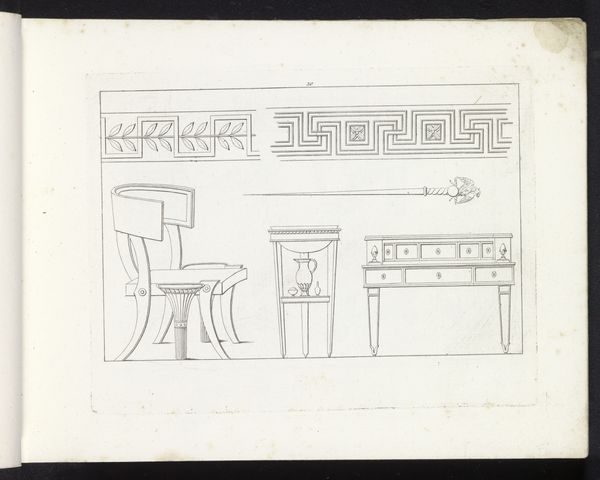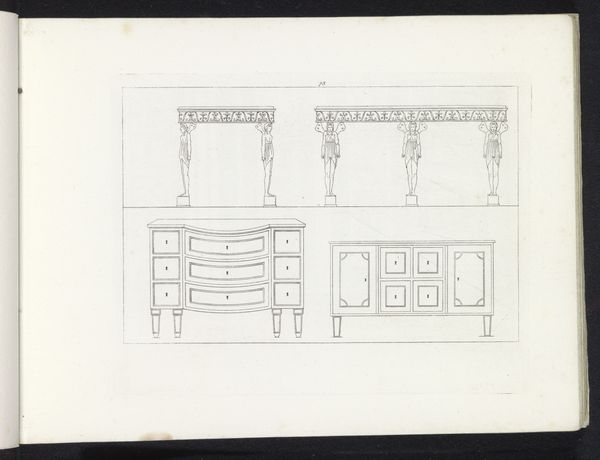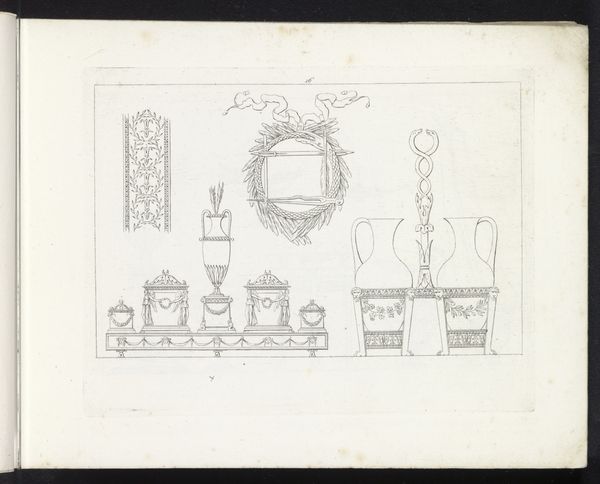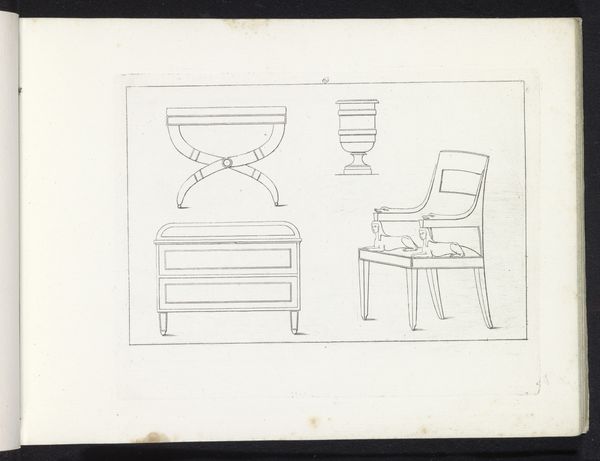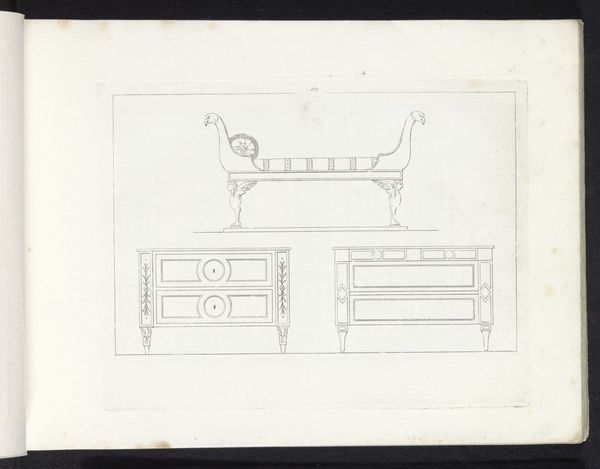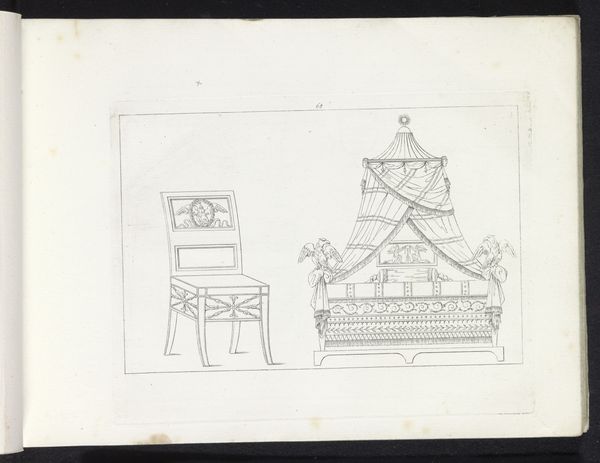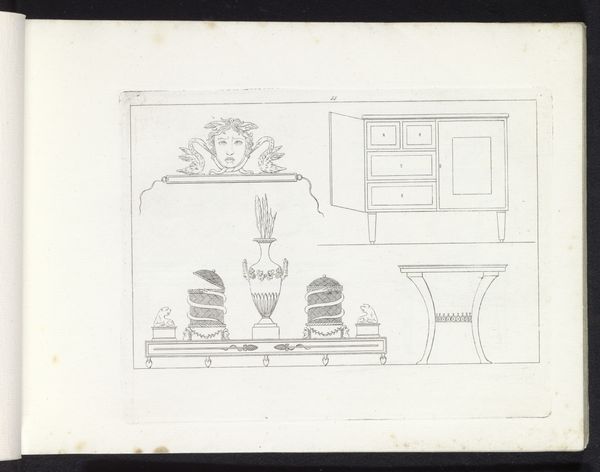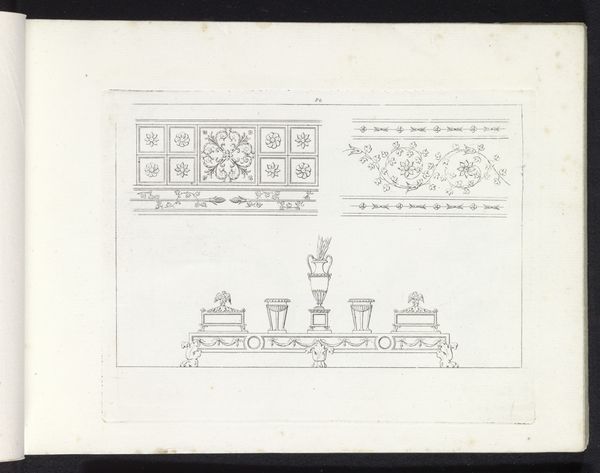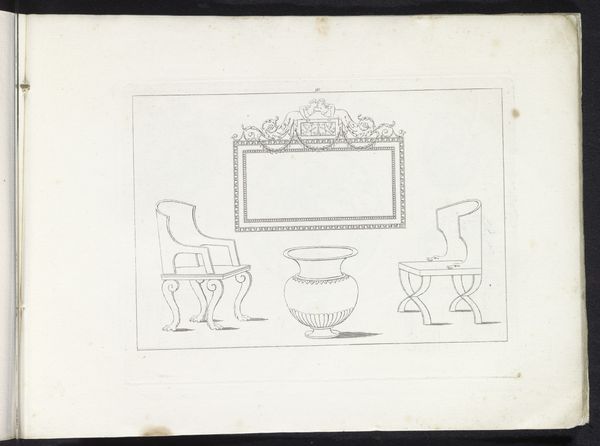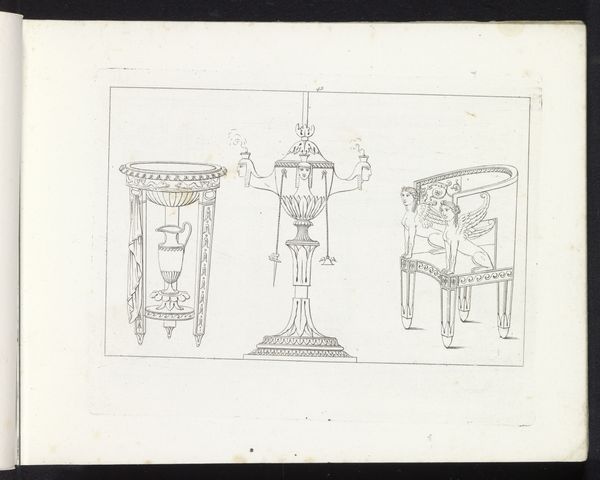
drawing, paper, pen
#
drawing
#
comic strip sketch
#
table
#
pen sketch
#
paper
#
personal sketchbook
#
idea generation sketch
#
geometric
#
ancient-mediterranean
#
pen-ink sketch
#
thin linework
#
line
#
pen work
#
sketchbook drawing
#
pen
#
storyboard and sketchbook work
#
sketchbook art
Dimensions: height 165 mm, width 216 mm
Copyright: Rijks Museum: Open Domain
Editor: Here we have Pietro Ruga's "Bankje, twee stoelen en twee aanzichten van een tafel," created in 1817 with pen on paper. I'm immediately drawn to the archaeological feel; it reminds me of something Howard Carter might have sketched in King Tut's tomb. What do you see in this piece? Curator: Indeed, the Egyptian revival style is very present. Consider the date: 1817. This drawing emerges during a period heavily influenced by Napoleon’s Egyptian campaign and the subsequent publication of "Description de l'Égypte." How do you think that cultural phenomenon impacted the production of decorative arts and, crucially, the artist's choices? Editor: Well, it looks like everyone, including Ruga, was incorporating Egyptian motifs into everyday design! The hieroglyphs and stylized figures feel less like religious symbols and more like fashionable ornament. Curator: Exactly. And that appropriation raises some questions. Think about the role of the museum during this period. They were consolidating imperial collections and presenting them to the public. Does Ruga’s drawing engage with that process of displaying and consuming culture, or does it offer a critique of colonial consumption? Editor: Hmm, that’s interesting. Perhaps he’s both celebrating the style and subtly questioning the way Egyptian culture was being repackaged for European audiences. It almost feels like a flat-pack version of Egyptian design! Curator: Precisely! We have to consider not only the aesthetic choices but also the social and political environment in which they were made and consumed. This drawing isn't just about pretty furniture; it's about the power dynamics embedded in the act of looking and possessing. Editor: This makes me rethink my initial reaction! It's not just a casual sketch but a commentary on cultural appropriation and the role of art in shaping perceptions of the past. Thank you for sharing these reflections! Curator: My pleasure. And it reminds us to always ask whose history is being told and who benefits from its telling when engaging with art, whether old or new.
Comments
No comments
Be the first to comment and join the conversation on the ultimate creative platform.
